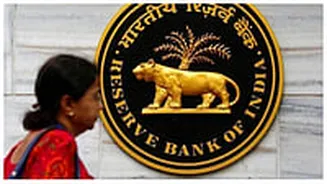Understanding Lending Rates
Lending rates are crucial for anyone considering a loan. They determine the cost of borrowing money from a bank. Banks use various methods to set these
rates, with the Marginal Cost of Funds-based Lending Rate (MCLR) being a key benchmark. MCLR reflects the minimum interest rate a bank can charge on certain loans. It's calculated based on the cost of funds for the bank and influences interest rates on various loan products like home loans, personal loans, and auto loans. Understanding MCLR helps borrowers compare offers from different banks and make informed decisions about their loans. Changes in MCLR can significantly impact the equated monthly installments (EMIs) borrowers pay. A lower MCLR generally translates to lower EMIs, making loans more affordable. The opposite is also true. Therefore, staying informed about MCLR fluctuations is vital for borrowers seeking the best possible loan terms.
What is MCLR?
MCLR, or Marginal Cost of Funds-based Lending Rate, is the minimum interest rate a bank can offer on certain loans. It is directly tied to the bank's cost of acquiring funds. The cost of funds includes interest paid on deposits, borrowing from other banks, and other expenses associated with managing funds. The Reserve Bank of India (RBI) introduced MCLR to improve transparency in lending practices. Before MCLR, banks used the Base Rate to determine loan interest rates. MCLR gives a clearer picture of a bank's cost of funds, which can then be passed on to borrowers. Different tenures (e.g., overnight, one month, one year) have corresponding MCLR rates. The rate also changes, reflecting changes in the cost of funds.
Bank of Baroda's MCLR
Bank of Baroda, like other banks, uses MCLR to set its lending rates. Keeping track of Bank of Baroda's MCLR rates is crucial for potential borrowers. The rates vary depending on the loan tenure. Shorter tenures typically have lower MCLR rates than longer tenures. The bank regularly revises its MCLR rates, influenced by factors like the overall economic environment and the RBI's monetary policy decisions. These revisions impact the interest rates charged on new loans and the interest rates on existing loans linked to MCLR. It's recommended to check the latest MCLR rates from Bank of Baroda before applying for a loan to ensure you're getting the best possible terms. Staying updated about changes helps in planning and budgeting for loan repayment.
Impact on Borrowers
MCLR significantly impacts borrowers, directly affecting their EMIs. When MCLR decreases, it generally leads to lower interest rates on loans, decreasing the amount borrowers pay each month. This decrease in EMIs offers financial relief, making loans more affordable. Conversely, an increase in MCLR increases interest rates, leading to higher EMIs, which increases the overall cost of the loan. Borrowers with loans linked to MCLR should watch for these changes. The impact of MCLR extends beyond new loans, often affecting existing loans that are linked to this benchmark. Regular monitoring of the MCLR helps borrowers assess their financial obligations and adapt their financial plans accordingly. Keeping an eye on these rates is crucial for prudent financial management.
Rate Changes Analysis
Analysing rate changes involves understanding the trend of MCLR fluctuations. When a bank reduces its MCLR, it is likely to offer lower interest rates on new loans. This can create an opportunity for borrowers to refinance existing loans at a lower rate. The trend could signal a positive outlook for the economy or reflect a strategic move by the bank to attract new customers. On the other hand, an increase in MCLR might indicate rising funding costs for the bank or a change in the economic climate. In this scenario, borrowers might face higher interest rates. It is important to compare the MCLR rates with those of other banks to gauge how competitive the bank is. Being aware of the factors driving these changes allows borrowers to make informed financial decisions.














